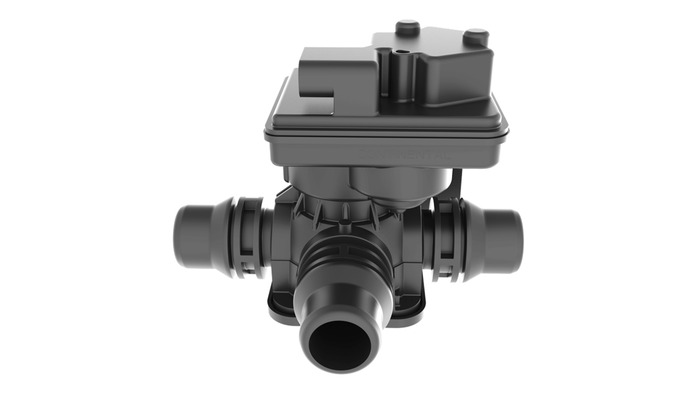Introduction
Smart coolant flow distributors are innovative systems designed to manage and optimize coolant distribution in thermal management setups. Unlike traditional coolant distribution systems, these advanced devices incorporate intelligent technologies such as sensors, actuators, and control algorithms. They dynamically regulate coolant flow based on real-time thermal loads, ensuring efficient heat dissipation, energy conservation, and enhanced performance. These distributors are essential in applications where precision cooling is critical, such as electric vehicles, data centers, aerospace systems, and industrial machinery. By adapting to varying thermal demands, smart coolant flow distributors not only improve system reliability but also contribute to sustainability by reducing energy consumption and operational costs.
Key Features on Smart coolant flow distributors
- Adaptive Flow Control
Smart coolant flow distributors use real-time data from integrated sensors to adjust the flow rate of coolant dynamically. This ensures optimal cooling for components with varying heat loads, preventing overheating and avoiding undercooling. For instance, in electric vehicles, these systems can prioritize battery cooling during peak performance or adjust flow to motors as needed, thereby enhancing the efficiency of the overall system. - Energy Efficiency
By directing coolant only to areas where it is needed, smart distributors minimize wasteful energy usage. They reduce the workload on pumps and cooling units, leading to lower electricity consumption. This is especially beneficial in data centers, where cooling costs constitute a significant portion of operational expenses. Smart systems ensure that the coolant flow is optimized for energy savings without compromising performance. - Compact Design
These distributors are designed to be space-efficient, integrating seamlessly into existing systems. Their compact design makes them suitable for applications with limited space, such as in aerospace and automotive industries. Despite their small size, they deliver high-performance cooling by utilizing innovative layouts and materials to maximize thermal conductivity and minimize resistance to coolant flow. - Enhanced Reliability
Reliability is critical in thermal management, especially in mission-critical applications like aerospace and high-performance computing. Smart coolant flow distributors improve system reliability by maintaining consistent cooling under varying conditions. They also incorporate fail-safe mechanisms, such as automated shut-off valves and emergency flow adjustments, to protect sensitive components from damage during system failures. - Remote Monitoring and IoT Integration
Modern smart distributors are equipped with IoT-enabled features, allowing real-time monitoring and control through remote systems. Operators can track temperature, flow rates, and performance metrics using dashboards or mobile apps, enabling predictive maintenance and reducing downtime. For example, a factory manager can receive alerts about potential coolant flow issues before they lead to equipment failure, saving both time and resources. - Multi-Zone Cooling
Smart coolant flow distributors are capable of managing multiple cooling zones simultaneously. Each zone can have its own flow rate and temperature requirements, allowing precise cooling tailored to specific components. For example, in an electric vehicle, the battery, inverter, and motor can all have independent cooling circuits controlled by the same system, ensuring each component operates within its optimal temperature range.
Applications of Smart coolant flow distributors
- Electric Vehicles (EVs)
Smart coolant flow distributor play a crucial role in managing thermal loads in EVs, where components like batteries, inverters, and electric motors generate significant heat. By optimizing the cooling for each part, these systems improve battery life, enhance energy efficiency, and support rapid charging without overheating. - Data Centers
Cooling is a major concern in data centers, where servers operate at high intensities. Smart distributors ensure precise coolant flow to server racks with higher thermal loads, improving cooling efficiency and reducing operational costs. Their ability to work in conjunction with liquid cooling systems makes them highly effective for modern high-density data centers. - Industrial Machinery
Heavy-duty machinery requires robust thermal management to maintain performance under continuous operation. Smart coolant flow distributor prevent overheating by delivering the exact amount of coolant required for different machine components. This extends the lifespan of machinery and minimizes the risk of costly downtime due to thermal failures. - Aerospace Systems
In aerospace applications, weight and space are critical factors. Smart coolant flow distributor not only optimize cooling but also contribute to weight reduction by eliminating the need for bulky traditional cooling systems. They ensure the thermal stability of avionics, engines, and other critical systems, even under extreme conditions. - HVAC Systems
In modern HVAC setups, smart distributors improve cooling and heating efficiency by dynamically adjusting the coolant flow to different zones in a building. This ensures comfort in occupied areas while minimizing energy wastage in unoccupied ones, contributing to overall energy savings and sustainability.
Conclusion on Smart coolant flow distributors
Smart coolant flow distributor are a game-changing innovation in thermal management, offering precision, adaptability, and significant energy savings. Their ability to dynamically adjust coolant flow, manage multiple zones, and integrate with IoT systems makes them indispensable in industries ranging from automotive to aerospace. By ensuring efficient cooling and reducing energy consumption, these systems align with the growing demand for sustainable and cost-effective solutions. As technology continues to evolve, smart coolant flow distributors will remain at the forefront of thermal management, driving advancements in efficiency, reliability, and environmental sustainability. They represent the future of intelligent cooling systems, meeting the challenges of modern industrial and technological applications with precision and innovation.

